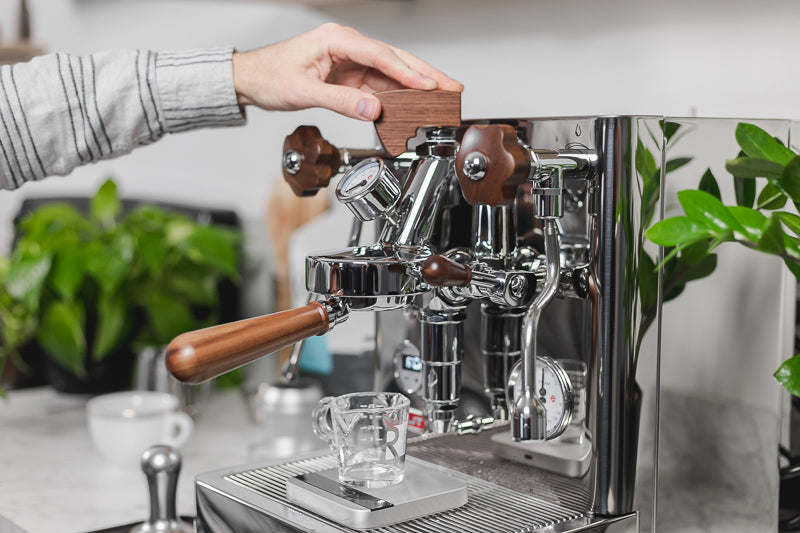
Flow Control: Want it? Need it? Should you have it?
Elise PorterA question we often get asked from our customers what is flow control? What does flow control do? And do you need it on your machine?
Flow control has gained a lot of popularity in recent years, we have a few machines that include flow control native; the ultimate endgame machine by La Marzocco, the GS3, the ECM Synchronika Mode, the Profitec 700 and 600 - updated exclusively in the UK for Bella Barista, and the most popular in our range the Lelit Bianca.
What is Flow Control?
The flow control paddle on top of the group head moves a spindle that opens and closes an aperture that restricts or increases water flow to the espresso puck during an extraction.
- Espresso machines deliver water from the pump to the group head at a defined flow rate. This flow rate can vary depending if your machine has a rotary pump or a vibratory pump.
- Then, add resistance to the water flow by adding coffee to your portafilter. Resistance will cause pressure to build within the group head, which is related to the resistance from the coffee in the portafilter. The resistance is affected by your grind size; if its coarse, the pressure in your group head will not build up to 9-bar, and your espresso will extract too quickly.
- As an espresso puck extracts for longer periods, the puck begins to degrade, and extraction increases—creating over-extracted and astringent flavours. Since E61 espresso machines cannot moderate their flow rate independently, you can influence this by changing the flow rate of water to the group head by using a flow control paddle.
How will Flow Control Improve Your Espresso?
If you already love your espresso shots and don't want to delve any deeper then thats completely fine! Flow control is an additional feature that you might want to use to help you get the most out of your espresso extraction. So what does it do? Here is an example of how you might use your flow control device while extracting your espresso, and what it does:
- Pre-infusion: a two to three-bar even saturation of the coffee puck. 10-12 seconds at the beginning of your shot will thoroughly wet 18-20g of espresso evenly. Mainly, you’re allowing the coffee to be wet, minimizing the chance for channeling, and building the body of the espresso shot—experiment with upping the pre-infusion by a second or two.
- Infusion: after around 10-12 seconds of pre-infusion, slowly ramp up the pressure by moving the paddle to the right.
- Post-infusion: the longer you extract the solubles from the espresso puck, the faster water will flow through the puck and the quicker it degrades—leading to bitter, over-extracted flavours and a very astringent mouth feel. To avoid these undesirable flavours, start tapering down the pressure by moving the flow control paddle back to the left, restricting water flow, and slowly continuing until you end your extraction. Remember, you’re not changing the pressure applied to the puck, only lessening the water flow. So, the longer your extraction is, the faster water will flow through the puck. Tightening the water flow will keep your extraction flowing steadily until you decide to stop it.
Do I need Flow Control?
No, it is not essential to everyday espresso brewing and is not a crucial element to making delicious tasting espresso. However, if you are wanted to delve deeper into your espresso and experiment and tinker then yes, why not!

